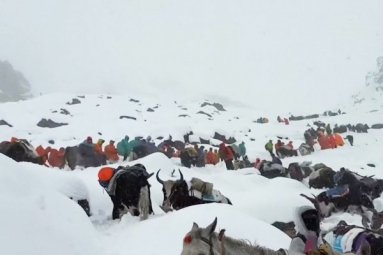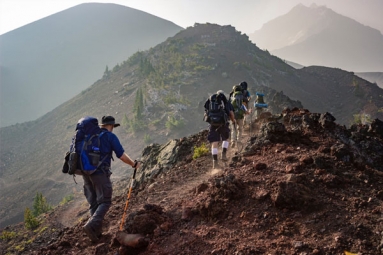
(Image source from: Canva.com)
International Mount Everest Day is celebrated on May 29 to honor the momentous occasion of the first successful climb of the tallest mountain on Earth. On this date in 1953, Sir Edmund Hillary from New Zealand and Tenzing Norgay Sherpa from Nepal achieved a historic milestone by reaching the peak of Mount Everest, which stands at 8,848 meters (29,029 feet). This day not only acknowledges the bravery and resolve of these trailblazing climbers but also highlights the essence of mountaineering, the strength of the human spirit, and the cultural and ecological importance of the Everest region. This year, let us take the opportunity to reflect on that remarkable ascent, its enduring influence worldwide, and the reasons why conquering Everest remains one of humankind's most inspiring accomplishments.
The endeavor of climbing Mount Everest, undertaken by Hillary and Norgay, captivated the entire world. Despite battling frostbite, raging storms, and the challenges of high-altitude fatigue using only basic climbing equipment, they successfully completed their journey. After Hillary passed away in 2008, Nepal's government designated this day as International Everest Day to honor their achievement and celebrate their enduring legacy, persistence, and the cooperative spirit among different cultures working together toward a common goal.
The celebration of International Everest Day transcends merely recognizing that iconic first climb. It serves as a homage to the remarkable bravery, tenacity, and collaboration that made that momentous ascent achievable. This day continues to motivate explorers around the world while acknowledging the profound spiritual and cultural importance of Mount Everest to the Sherpa and Tibetan peoples, who hold the mountain in great reverence. In addition, International Everest Day emphasizes the crucial role that tourism related to Everest plays in the economy of Nepal and urges the promotion of sustainable and responsible climbing practices. It provides an essential opportunity to tackle mounting environmental issues in the Himalayas, such as climate change, the retreat of glaciers, and the pressing need for improved waste management on the mountain.
Years after the groundbreaking ascent by Hillary and Norgay, reaching the summit of Mount Everest remains a daunting and fascinating challenge.
Extreme Altitude: Climbing above 5,000 meters presents significant dangers, as the atmosphere becomes perilously thin with alarmingly low oxygen levels, profoundly impacting mental clarity. Climbers on Everest confront breathlessness and encounter symptoms of altitude sickness, including headaches, fatigue, dizziness, stomach problems, and troubles with sleep.
Treacherous Terrain: The Khumbu Icefall poses lethal challenges due to its unstable ice blocks, deep crevasses, steep ice cliffs, and exposed ridges, requiring expert skill and extreme caution for safe navigation.
Unpredictable Weather: Climbers face one of the most hazardous elements of Everest in the form of erratic weather, including sudden snowstorms, gale-force winds, low atmospheric pressure, high levels of UV radiation, and severe cold temperatures.
Constant Dangers: The threat of avalanches and falling rocks looms heavily, always presenting risks that can have grave consequences.
Despite improvements in climbing technology, meteorological predictions, and logistical aid, ascending Mount Everest necessitates extensive preparation and sometimes, sheer luck. Climbers continually grapple with the challenges posed by altitude sickness, adverse weather conditions, strong winds, and the significant threats associated with avalanches and the perilous Khumbu Icefall, making this one of the most formidable pursuits in the mountaineering world.











